Phrasing is how we shape a line. But it’s actually more than that. In the bigger sense it is how we tell a story, and telling a musical story in a conversational sense is how we express ourselves.
When we have a conversation, in the traditional sense, we use words to help get our meaning across. But the essence of our conversation is a point we are trying to make. This point could be looked upon as our goal.
In order to make our point, and get it across successfully, we want to have a good vocabulary so we can be articulate and expressive. The way we do this is by using many different conversational tools, including metaphor, repetition, set up and resolution (point of climax) and so on. We may even raise or quiet our voice for dramatic effect.
In a musical conversation, we can do similar things (except perhaps metaphor).
We can use set up and resolution to tremendous effect.
We can also target points in our phrases. We can target certain climactic parts of each phrase (something that perhaps cannot be taught), but we need to target certain notes within our phrase, and this is something that can be taught and is important to learn.
We can think of target tones as nothing more than chord tones. If we are thinking of Gmaj7 for example, our chord tones are:
| Gmaj7 | G | B | D | F# |
|---|---|---|---|---|
| 1 | 3 | 5 | 7 |
Let’s assume we are playing through a two-five-one chord progression. When we land on our one chord, we need to target one of these chord tones so there is a resolution. In the same way, we can outline all other chord changes by focusing on these chord tones too.
But if we simply played arpeggios as the basis of ego…our solos, you can imagine it wouldn’t be very interesting. It would actually sound like an exercise.
So we learn to shape our melodies by outlining chord tones in a melodic way. Such was the genius of Charlie Parker who had the idea to focus on the upper structure of each chord and change the face of music from his time on.
In order to help bring out our musical point, we can set up our musical phrase using what we call approach notes.
An approach note is a note or series of notes that literally approach our target chord tone.
The most common way we do this is with the use of chromaticism. If our phrase takes us to the third of a chord, our approach note could be a semitone behind it, or in front of it.
Once we start implementing approach notes the sound of jazz is everywhere.
So let’s look at some target & approach phrases using positions you may be familiar with.
First I will show a diagram of an arpeggio that shows the main chord tones of the phrase we will look at. The arpeggio is also a phrase you can use in itself as part of your melodic vocabulary (remember, we never need to practice anything we cannot use in a practical playing setting).
Then you will see a phrase that should be played at the same location.
I have used the letter “T” for target note and “A” for approach in my examples.
Am9 – Shape 1
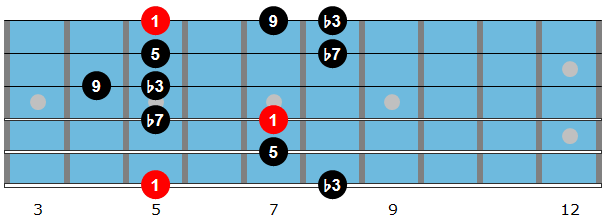
Backing Track
Listen and Play

Am9 – Shape 2
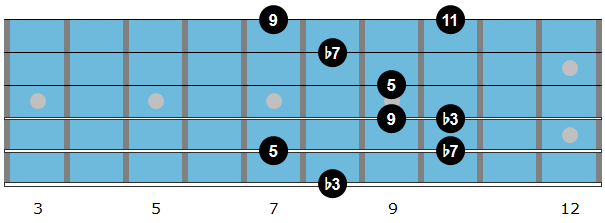
Backing Track
Listen and Play

Am9 – Shape 3
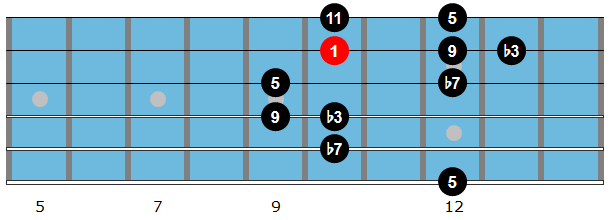
Backing Track
Listen and Play

D13 – Shape 1
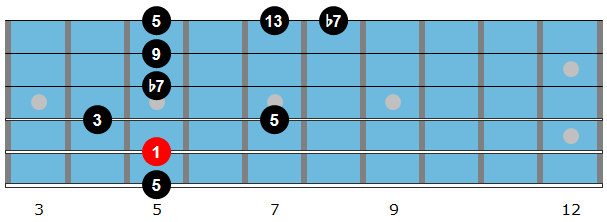
Backing Track
Listen and Play

D13 – Shape 2
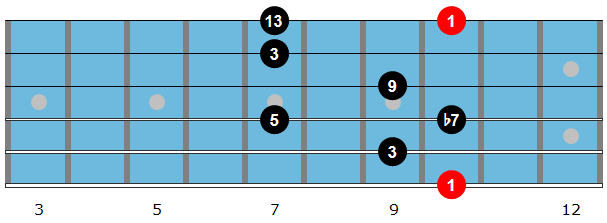
Backing Track
Listen and Play

D13 – Shape 3
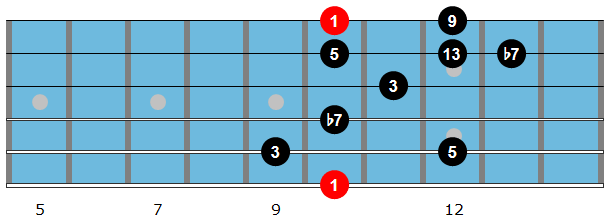
Backing Track
Listen and Play

Gmaj7 – Shape 1
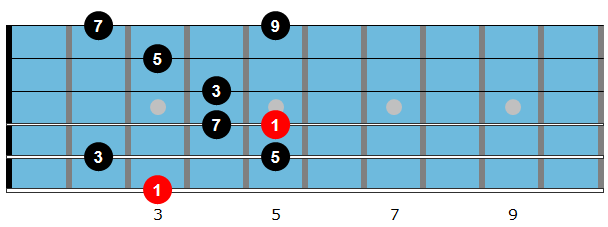
Backing Track
Listen and Play

Gmaj7 – Shape 2
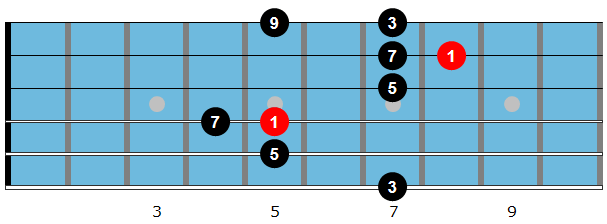
Backing Track
Listen and Play

Gmaj7 – Shape 3
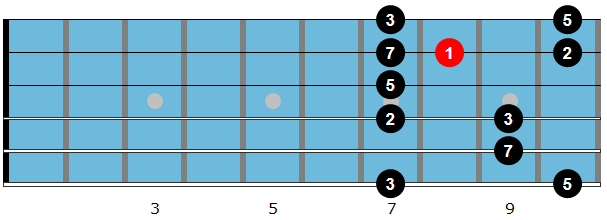
Backing Track
Listen and Play

Gmaj7 – Shape 4
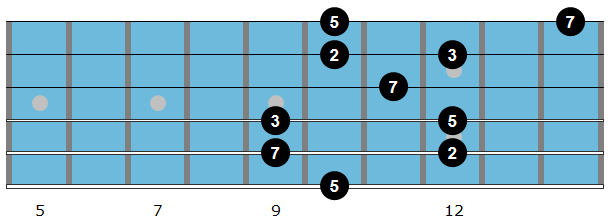
Backing Track
Listen and Play



great lesson and great lines ..the Gmay7 shape 2 is missing the 3rd tho..
Best online course ever! I’d like to request a new coupon for the package that has the 9 e-books
Thanks!
Very tasty little lesson. love that minimal piano backing, helped me get into a nice groove and take the already good phrasing for a ride.
Very interesting things. One thing though, in Am9 why you consider d as a chord tone (target tone)?
Stupid question, as an 11 I suppose.
Very good lessons. But I can’t download the play alongs.
Hi Eddie, did you click the downward pointing arrow next to the audio player?
If you can’t see the arrow, which device and browser are you using?
Look at the end of each track on this page–there’s an arrow icon & a play icon. Right click on that arrow icon & select ‘open link in new tab’. Go to the new tab & right click the play section of the selected track. Select download track & once downloaded, name it
I can’t play the backing tracks, can you tell me what I need, what software? thanks
Hi Andre, which device and browser are you using?
Very good article!
Minor point, but I think it’s completely possible to use metaphor in our solos and music too. All of our majors and minors, our feelings of tension, our ‘soaring’ or ‘blistering’ lines are all hidden metaphors waiting to be understood by the listener, and is sorta determined by the ‘feel’ of whatever we choose to play.
Takes absolutely nothing away from this clear and instructive lesson though. Very good way of viewing things!
Sure man, whatever works! But how do you define a “metaphor” in a musical context?
Excellent lesson as usual! I can start using these licks in my country/texas swing band I’m in. Thanks!